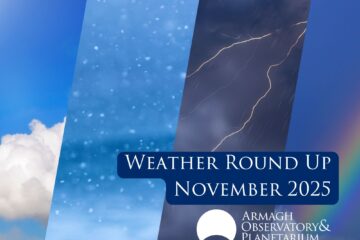Looking up at the wonders of the night sky is an amazing pastime, and whether you use a telescope or binoculars all you really need is the naked eye, but remember to give your eyes at least 20 minutes to adapt to the dark to ensure that you can see all that the night sky as to offer. Now that the clocks have gone forward it’s great to see the longer stretch in the evenings, only downside is that there is less darkness to stargaze! A great night to do some stargazing will be the 5th April as on this date there will be a New Moon meaning the sky will be much darker and not flooded with moonlight, making it the perfect time to go planet spotting. Both Jupiter and Saturn will rise in a South Easterly direction. Jupiter will be visible from approximately 2am and observable until 9am, although Saturn will be fainter than its giant neighbour in the sky and visible from approximately 3 am.

In the Northern Hemisphere one of the most famous star patterns, the Plough sometimes called the Big Dipper, is visible all year round as it never sets below the horizon. The Plough is an asterism, which is a well-known group of stars, and part of a much larger constellation. In this case the Plough belongs the constellation Ursa Major the Great Bear, the third largest constellation. At this time of year, we can use the Plough to guide us to one of the jewels of the Spring night sky. Using the handle of the Plough extend along a curve towards the horizon until you arrived at a bright orange star. This star is called Arcturus, an easy way to remember how to find Arcturus is you must ‘Arc to Arcturus’.

Arcturus is the brightest star found in the constellation of Boötes the Herdsman and is the fourth brightest star in the night sky. People today often think that Boötes resembles the shape of a kite! Arcturus is a red giant nearing the end of its life, it will not go supernova but rather it will become a planetary nebula. It is approximately 25 times the diameter of the Sun and 100 times brighter. Arcturus is relatively close to the Sun, about 37 light years away, and has the second highest proper motion of all the bright stars. It is changing its position in the sky by two arcseconds every year, moving towards the constellation of Virgo, and travelling at a speed of about 120 km/s with respect to the Sun.

Speaking of Virgo, she is also visible in the spring night sky. Virgo the Maiden is the only woman to be represented in the zodiac, she is made up of 13 stars and is the second largest constellation who represents the Goddess of Harvest. Virgo can be easily located by finding its bright star Spica, which marks the maidens left hand. So, to find it look for the handle of the Plough, and arc to Arcturus, the brightest star in the constellation Boötes. Once you reach Arcturus, you travel down in a straight line to Spica, you “spike” to Spica. Spica is a brilliant blue star that is located 260 light years from Earth; though Spica appears to be a solitary star in our night sky it is actually a Binary Star System with one star being much brighter than the other. Within Virgo the Sombrero Galaxy or M104 can be readily seen with binoculars and is located to the left of Spica. Its name was given to due to resemblance to a sombrero hat and is a mere 28 million light years from Earth. Like our own Milky Way Galaxy, the Sombrero Galaxy is a spiral galaxy that is facing almost Earth edge on.

Sombrero Galaxy (M104), a magnificent Spiral Galaxy seen edge on from Earth
Credits: NASA and the Hubble Heritage Team (STScI/AURA)
Another constellation to look out for is Hydra the water snake. Although it not one of the most well-known constellations it is the longest and is made up of 17 stars scattered across the sky, however most of these stars are very faint. It can be found beneath the three constellations of the Zodiac, Cancer, Leo and Virgo. The brightest star is called Alphard, often referred to as the serpent’s heart, has a magnitude of 2.0. Alphard means the solitary one as it lies in a barren region of the sky. The legend goes that Hydra was a multi-headed sea serpent that the great hero Hercules had to defeat as one of his 12 labours. This was not an easy task because when Hercules beheaded the serpent two new heads world grow back in its place!
Toward the end of the month we are in for a treat as we will be graced with a meteor shower! Everyone loves a good meteor shower and the Lyrids are no exception. They will run from the 16-25 April with its peak on the night of the 22nd and appears to emanate from the constellation of Lyra. There will be approximately 20 meteors per hour and they are the remains of dusty debris from the Comet Thatcher, which was discovered back in 1861. The only problem will be the moon will be in waning gibbous phase which means 82% of the Moon will be visible and hindering your view of fainter objects. The best viewing time will be after midnight, so be sure to keep an eye out.
There we have it, the April Night sky. I would encourage you all to look up at the wonders of the night sky, weather dependant of course. Happy star gazing everyone!!



0 Comments